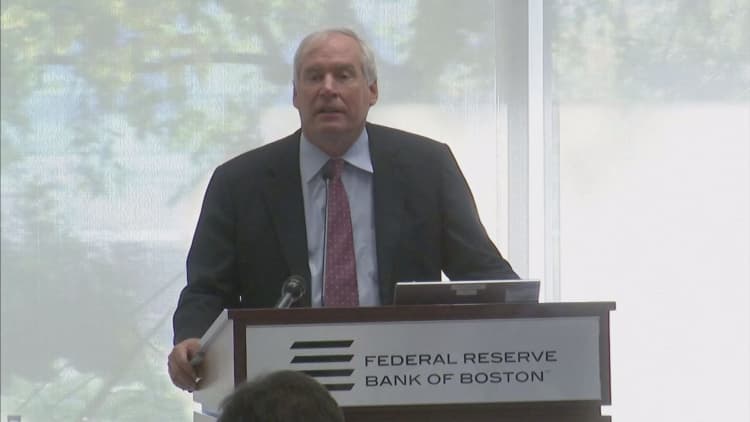
May's low job creation was more a function of a legitimately weak month than an economy reaching full employment, according to a Goldman Sachs analysis.
Since the Labor Department announced a week ago that nonfarm payrolls grew by just 38,000 last month, Wall Street has debated what the numbers mean. Were they an indication of a scary economic slowdown, or just that after more than 5½ straight years of monthly gains, there simply remains very little slack left in a jobs market that has 12.8 million new hires since the Great Recession ended?
Data on worker availability and supply going back to 1975 suggest that the employment situation is still a distance from topping, Goldman economist David Mericle said in a note to clients.
"Labor market tightening cannot explain away the weak May payrolls print, which instead appears to mostly reflect a month of weaker labor demand," Mericle wrote.
Assessing the progress of the U.S. labor market is difficult because of cross currents: The headline unemployment rate that the government emphasizes fell in May to 4.7 percent, which Goldman considers a reflection of full employment.
However, a separate and less-publicized measure that includes those not looking for work as well as the underemployed who are working part-time for economic reasons remains elevated at 9.7 percent. Goldman believes this number, referred to as the U-6, needs to fall to 8.9 percent to reach its "structural rate," or a level indicating full employment.
But even if that level were to be hit, Mericle said the impact on the monthly jobs number wouldn't fall as much as May, which reflected a drop of 85,000 from the already weak 123,000 addition in April.
"The impact on job growth from the move we expect in the coming year, from slightly below to slightly above full-employment, is worth only [20,000] jobs per month," Mericle wrote. "Even a further decline to [1 to 2 percentage points] beyond full employment is associated with only a [55,000] slowdown from supply effects alone."
There has been some indication that the end of the seven-week Verizon strike, which affected nearly 40,000 workers, will cause an upward revision to May. However, the recent trend actually has been for prior months to be revised down, so there may be muted impact.
However, Mericle believes the poor performance in May is unlikely to become a trend. Goldman estimates that once the economy hits full employment, average monthly gains will be about 85,000. But the investment bank doesn't believe that will happen anytime soon.
"Rather, the current trajectory points toward an overshooting of full employment, a key reason why we expect further tightening of monetary policy," Mericle said.


